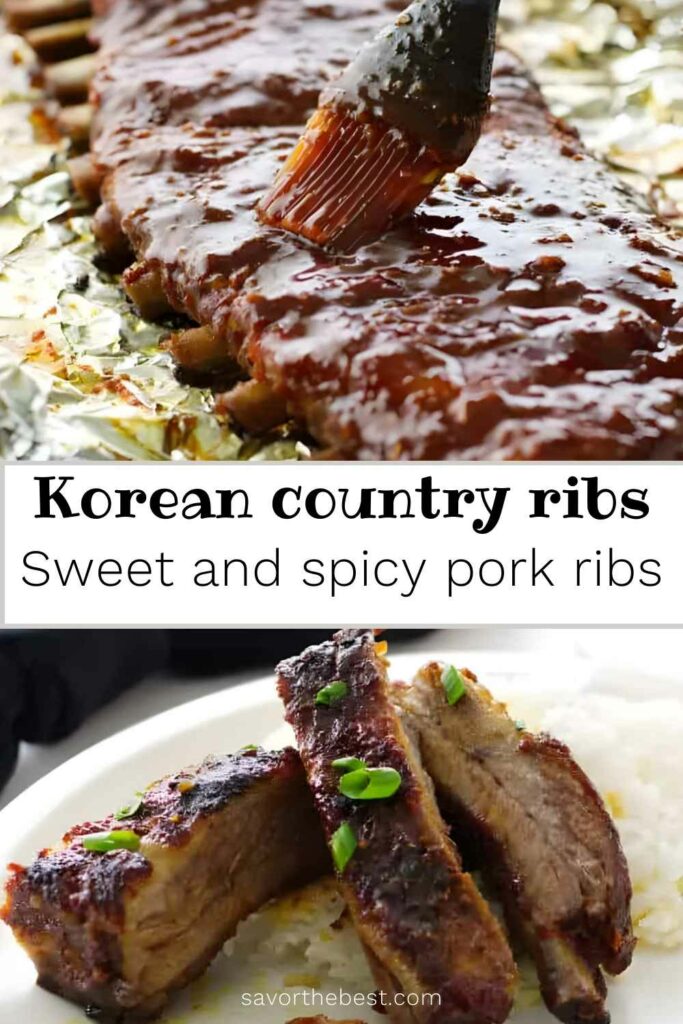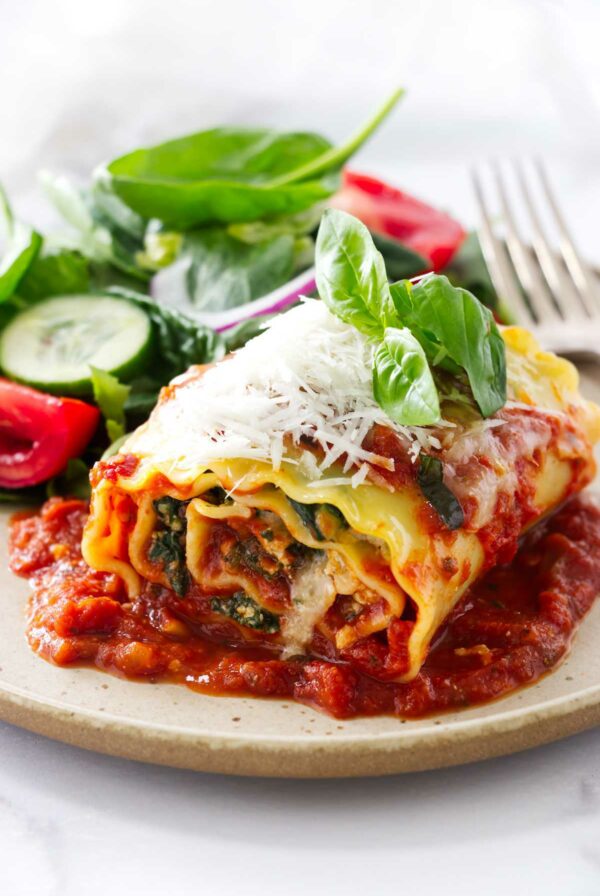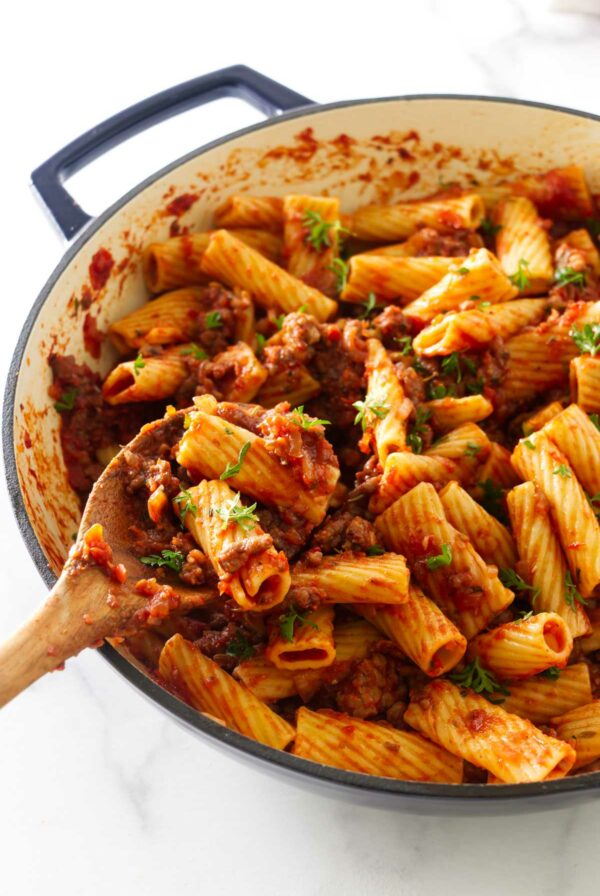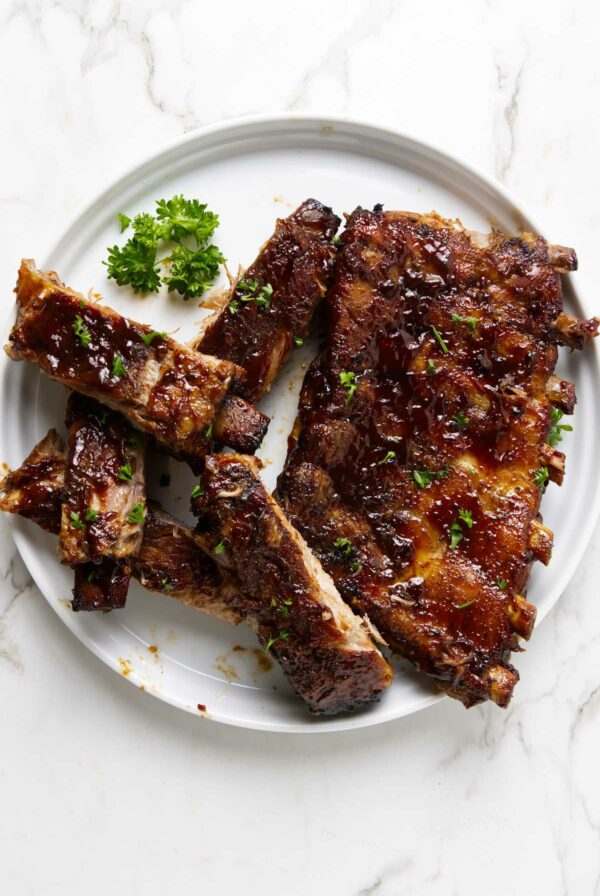This post may contain affiliate links. Please read our disclosure policy. As an Amazon Associate, I earn from qualifying purchases.
These sweet and spicy gochujang-glazed ribs break from tradition with a bold, Korean-inspired marinade, a slow roast in the oven, and a final hit on the grill for a glossy, caramelized finish.
These are tender, flavor-packed ribs with a sticky-sweet kick that’ll make you forget all about the usual BBQ routine.
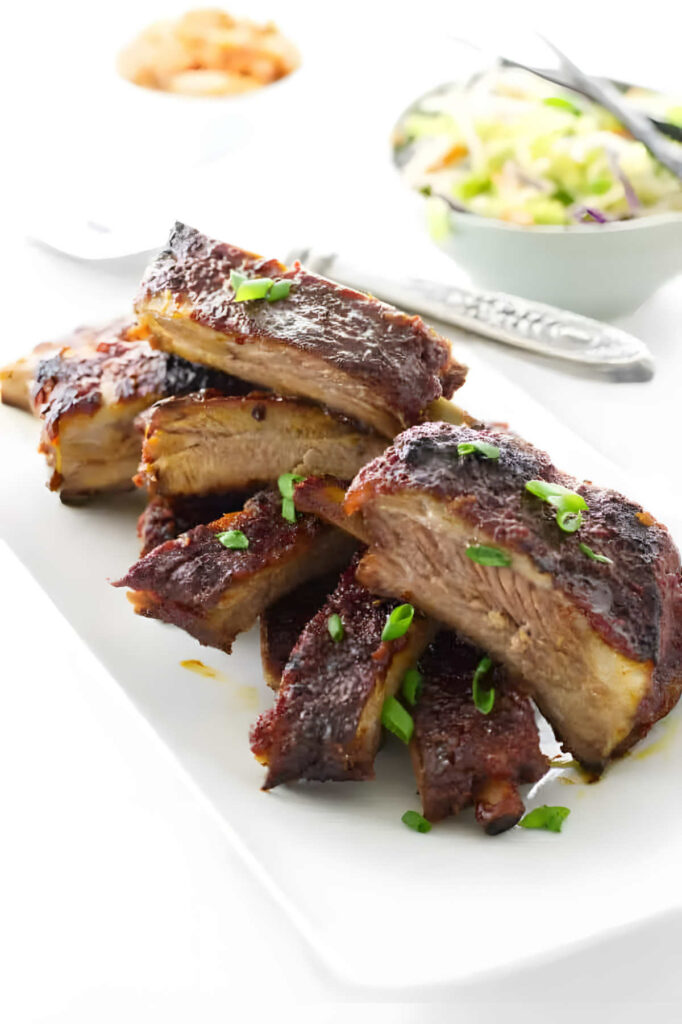
Here is Why This Recipe Works
Big flavors, low effort: A quick whisk of pantry staples creates a marinade that does all the heavy lifting for you. Sit back and let it work its magic.
Super tender: These ribs are cooked to be juicy and tender, with just the right amount of fall-off-the-bone goodness.
Sweet, spicy, and sticky: The glaze is the real MVP here; gochujang and honey team up for the perfect caramelized finish that’s finger-licking good.
Oven to grill perfection: No smoker? No problem. This recipe combines low-and-slow oven baking with a quick char on the grill for that just-right smoky touch.
If you like this recipe, try our Raspberry Chipotle BBQ Pork Ribs or Oven to Grill Pork Ribs.
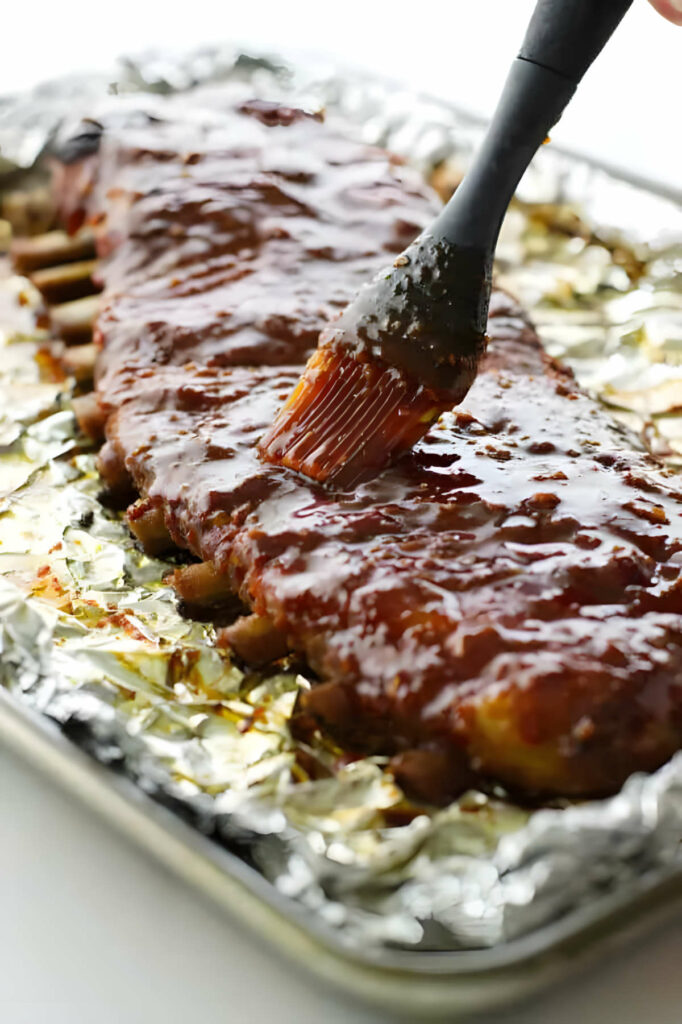
These ribs are perfect for backyard barbecues or casual dinners and they have the ideal balance of savory heat and sweet tang.
The Ingredients
- Meat: St. Louis-style pork ribs
- Produce: Fresh ginger root, garlic, green scallions
- Pantry: Brown sugar, rice vinegar, honey
- Pantry seasonings: Sesame seeds
- Condiments: Soy sauce, gochujang, toasted sesame oil
Variations
Citrus Ginger Glazed Ribs: Replace the rice vinegar with fresh orange juice and add a teaspoon of orange zest to the bbq sauce.
Spicy Honey Garlic Ribs: Increase the garlic to 8 cloves, double the gochujang, and add an extra tablespoon of honey for an extra sticky spicy sauce.
Hoisin-Glazed Asian Ribs: Replace the gochujang with hoisin sauce and add a tablespoon of Chinese five-spice powder to the marinade.

Tips for Success
- Taking off the silvery membrane from the ribs ensures they cook evenly and makes them easier to eat.
- If possible, let the ribs marinate overnight to allow the flavors to fully penetrate the meat.
- Wrapping the ribs tightly in foil traps moisture, keeping the ribs tender during the low-and-slow cooking process.
- The glaze can burn quickly, so stay close and flip the ribs frequently to achieve a caramelized finish without scorching.
- Mix the glaze ingredients while the ribs bake, so you’re ready to brush them on as soon as the ribs hit the grill.
- Serve the ribs with Kimchee Slaw or homemade kimchee.
If you’re into that hands-off, come-back-when-it’s-done kind of cooking, you’ll love our slow cooker Dr. Pepper ribs too.
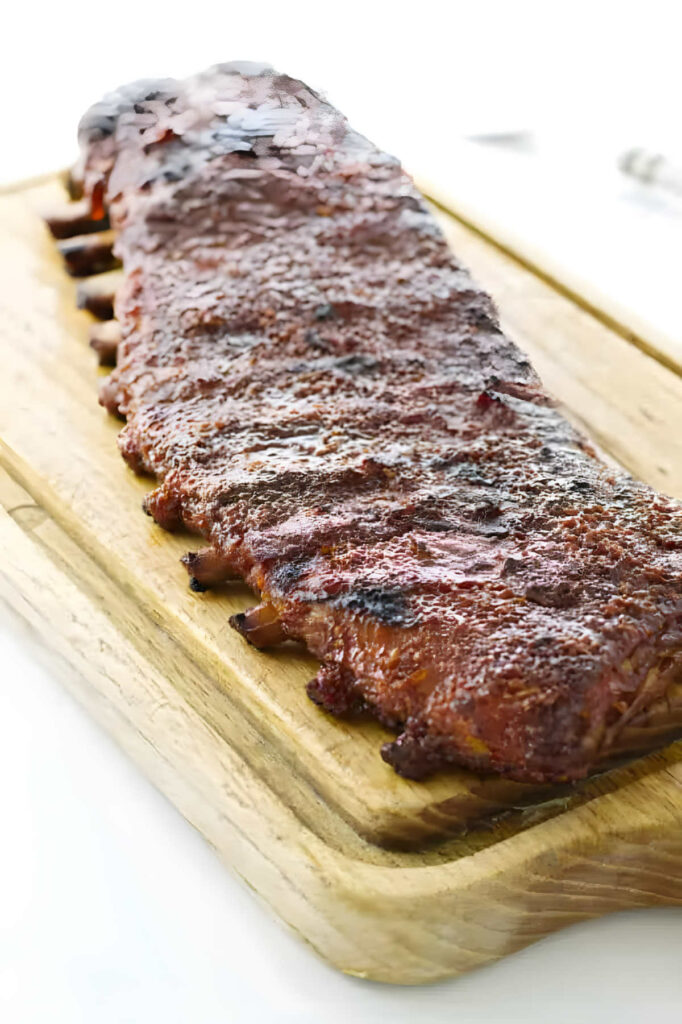
Storage
Refrigerate: Place the ribs in an airtight container or wrap them tightly in aluminum foil. Store in the fridge for up to 3 days.
Freeze: For longer storage, wrap the ribs tightly in plastic wrap and then aluminum foil, or place them in a freezer-safe airtight container. They’ll stay good in the freezer for up to 3 months.
Reheat: To reheat, place them on a baking sheet, cover them with foil, and warm in a 300°F oven for about 20 minutes.
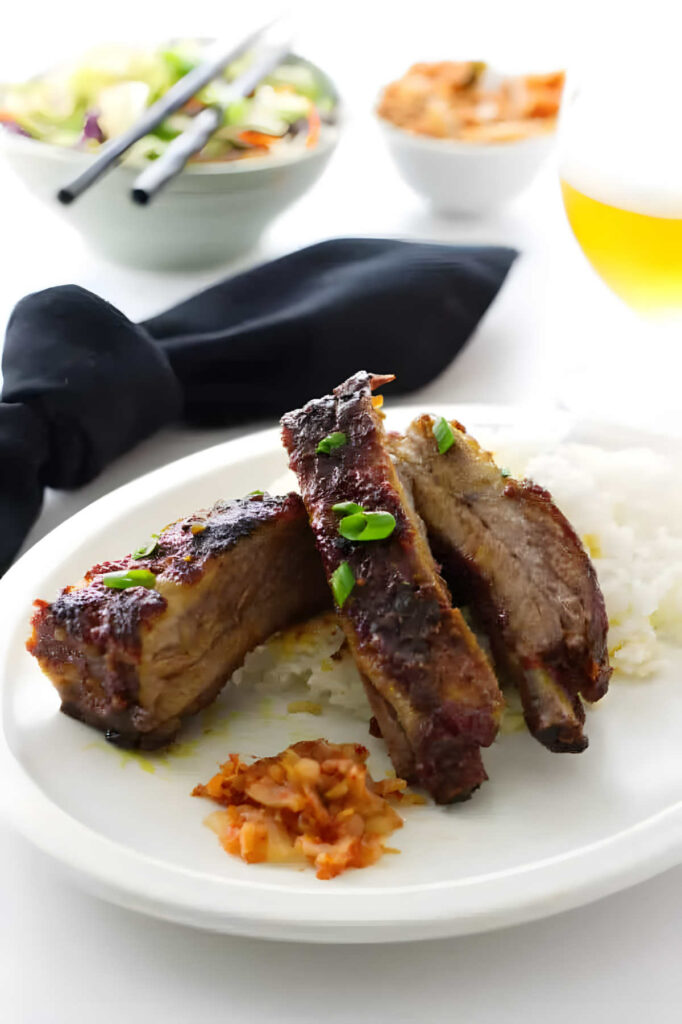
Asian Style BBQ Pork Ribs with Gochujang Glaze
Sweet and spicy Korean style pork ribs deliver bold flavor with minimal effort. With a rich marinade and caramelized gochujang glaze, these spare ribs are perfect for a casual dinner or a backyard cookout. Grab some napkins and dig in to sticky ribs!
More Recipes to Try
Pin this now to find it later!
Pin It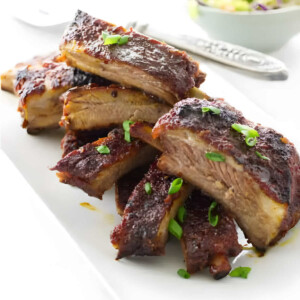
Sweet and Spicy Ribs
If you make this recipe, please leave a star rating and comment.
Ingredients
- 1 rack St. Louis Style pork ribs, about 3-pounds
For the Marinade:
- 2 ounces grated fresh ginger
- 6 garlic cloves, grated
- ½ cup brown sugar
- ¼ cup soy sauce
- ½ cup gochujang
- ¼ cup rice vinegar
- 3 tablespoons toasted sesame oil
For the Glaze:
- Reserved marinade
- ¼ cup honey, or corn syrup
- Sesame seeds, optional
- green scallion , Sliced tops only
Instructions
Prepare the ribs:
- Remove the silvery membrane from the underside of the ribs by sliding a table knife between the membrane and a rib bone. Pry the membrane up, stretching until it tears. Holding one end of the membrane with a paper towel, peel off the membrane and discard.
- Place ribs in a dish that is long enough that they fit comfortably.
For the Marinade:
- Add marinade ingredients to a bowl and whisk to combine.
- Reserve ½ cup of the marinade in a dish or jar to be used for the glaze. Refrigerate until needed.
- Pour remaining marinade over the ribs, turning to coat both sides. Cover with plastic wrap and refrigerate 6-8 hours or overnight.
Preheat the oven to 250°F
- Line a baking sheet with aluminum foil and coat with oil spray.
- Remove the ribs from the marinade and place on the foil-lined baking sheet.
- Cover the ribs with a second sheet of oil-sprayed foil, sprayed side down.
- Crimp the edges of the foil together on all sides and turn them up to keep the juices from oozing out.
- Transfer the baking sheet to the center rack of the oven and bake for 2 hours (more if needed)
- Remove the sheet pan from the oven and partially unwrap the foil to check for doneness.
- As the pork ribs cook, the meat shrinks and exposes the bones at the thinner side of the rack. When about ¼ to ½-inch of the bones are exposed, the ribs should be done.
For the Glaze:
- Add the honey, corn syrup or Korean malt syrup to the reserved marinade, stirring to combine and set aside.
To Grill the Ribs
- Prepare the grill for a medium heat.
- Remove and discard the top sheet of foil and coat the exposed side with a light brushing of the glaze.
- Transfer the ribs to the grill with the glazed side down and coat the exposed side with a light coating of the glaze.
- Grill for 3-5 minutes and flip the ribs over and grill another 3-5 minutes.
- Repeat this process once more, glazing and grilling until desired degree of color has been achieved being cautious that they do not burn.
To Serve
- Remove the ribs from the grill, cut between the ribs into serving pieces garnish with sliced onions and a sprinkle of sesame seeds. Enjoy.
Notes
- A large closable plastic bag works super-great, plus there is no dish to wash. 1 inch square of fresh ginger root = 1 tablespoon of minced ginger
- Fresh, unpeeled ginger tubers should be wrapped in paper towels, placed in a plastic bag and refrigerated up to three weeks. You may also wrap ginger tubers tightly and freeze them up to two months.
Nutrition
Nutrition information is automatically calculated, so should only be used as an approximation.
 Like this recipe? Rate & comment below!
Like this recipe? Rate & comment below!
